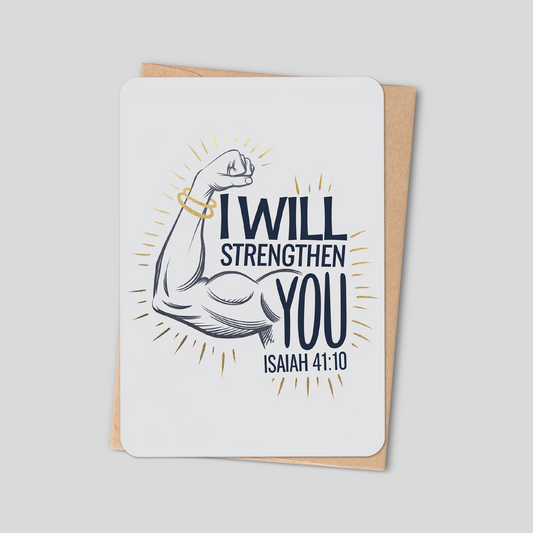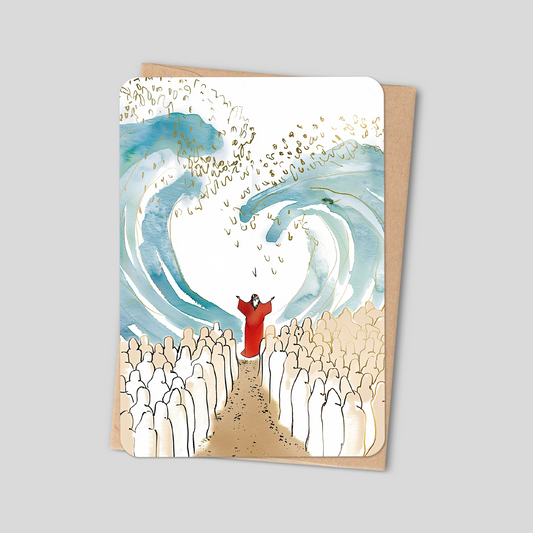Four Horses of Revelation Meaning: What the Bible Really Says About the Apocalypse
You've probably seen them in movies—four terrifying horsemen thundering across the sky, bringing doom and destruction to the earth. Pop culture loves the Four Horsemen of the Apocalypse. They show up in superhero comics, horror films, and video games as symbols of ultimate judgment and the end of the world.
But here's the truth: what Hollywood shows you and what the Bible actually teaches about these four horses are two very different things.
When most people think about the book of Revelation, they imagine cryptic codes, terrifying monsters, and a timeline of future events that feels more like a puzzle than a message from God. The Four Horsemen become detached symbols of fear rather than what they truly are—part of God's revealed plan for human history and His ultimate victory over evil.
If you've ever wondered what those four horses really mean, you're not alone. This passage in Revelation 6 has puzzled and fascinated Christians for two thousand years. But when we approach it with careful study, biblical context, and humble dependence on God's Spirit, the meaning becomes clearer—and far more relevant to your life today than you might expect.
Let's open Scripture together and discover what God actually reveals about these four horses and what it means for your faith, your hope, and your understanding of how this world's story ends.
Understanding Revelation: The Book That Reveals, Not Conceals
Before we dive into the four horses themselves, we need to understand the nature of the book of Revelation. The very name tells us something crucial—"Revelation" comes from the Greek word apocalypsis, which means "unveiling" or "revealing." This isn't a book meant to hide truth from us; it's meant to reveal it.
John, the beloved disciple of Jesus, wrote this letter while exiled on the island of Patmos. He begins with these words:
"The revelation from Jesus Christ, which God gave him to show his servants what must soon take place. He made it known by sending his angel to his servant John, who testifies to everything he saw—that is, the word of God and the testimony of Jesus Christ."
— Revelation 1:1-2
Notice that this revelation comes from Jesus Christ. It's not John's wild imagination or symbolic poetry disconnected from reality. This is divine truth, given by God the Father to Jesus, then communicated through an angel to John, who wrote it down for the churches.
Why All the Symbolism?
Revelation uses apocalyptic literature—a style of writing common in biblical times that employs vivid imagery, numbers, colors, and symbols to communicate spiritual truths. This wasn't meant to confuse readers; the original audience would have recognized many of these symbols from Old Testament prophecy.
When we read about horses in Revelation, the Jewish audience would immediately think of Zechariah's visions. When we see seals being opened, they'd connect it to Daniel's prophecies. The symbols point to realities—sometimes immediate historical situations, sometimes future events, and often timeless spiritual truths about God's sovereignty and Satan's defeat.
The key is reading Revelation the way it was meant to be read: as a message of hope and victory for believers facing persecution, revealing that no matter how dark things appear, Jesus Christ is the conquering King who will make all things right.
The Stage Is Set: The Lamb Opens the Seals
To understand the four horses, we must see where they appear in Revelation's narrative. In Revelation 5, John sees a scroll sealed with seven seals—a scroll representing God's plan for history and judgment. No one in heaven or earth is worthy to open it and reveal what's written inside.
Then John sees the Lamb—Jesus Christ, who was slain but now lives. Only He is worthy to open the seals:
"Then I saw a Lamb, looking as if it had been slain, standing at the center of the throne... He went and took the scroll from the right hand of him who sat on the throne. And when he had taken it, the four living creatures and the twenty-four elders fell down before the Lamb."
— Revelation 5:6-8
This is crucial: Jesus Christ Himself opens these seals. Whatever we see in the vision of the four horses, it's under Christ's sovereign control. These aren't random acts of chaos—they're part of God's purposeful plan unfolding in history.
When the Lamb opens the first four seals, the four horses appear. Let's look carefully at what Scripture actually says.
The Four Horses Revealed: What John Actually Saw
The First Horse: White (Revelation 6:1-2)
"I watched as the Lamb opened the first of the seven seals. Then I heard one of the four living creatures say in a voice like thunder, 'Come!' I looked, and there before me was a white horse! Its rider held a bow, and he was given a crown, and he rode out as a conqueror bent on conquest."
— Revelation 6:1-2
The first horse is white, and its rider carries a bow and wears a crown. He goes out "conquering and to conquer." Many scholars debate the identity of this rider. Some see it as Christ Himself (who appears on a white horse in Revelation 19), while others see it as a false Christ or the spirit of conquest and military expansion.
Given the context—these are judgments being released as Christ opens the seals—most biblical scholars interpret this as conquest, military victory, or possibly the spread of false religion. The white color may represent the appearance of righteousness or victory, but the context of judgment suggests this is not the triumphant return of Christ (which comes later in Revelation 19).
The Second Horse: Fiery Red (Revelation 6:3-4)
"When the Lamb opened the second seal, I heard the second living creature say, 'Come!' Then another horse came out, a fiery red one. Its rider was given power to take peace from the earth and to make people kill each other. To him was given a large sword."
— Revelation 6:3-4
The second horse is red—the color of blood and violence. Its rider takes peace from the earth and brings war, bloodshed, and slaughter. The "large sword" symbolizes military might and deadly conflict. This clearly represents war, violence, and the breaking down of peace among nations and peoples.
The Third Horse: Black (Revelation 6:5-6)
"When the Lamb opened the third seal, I heard the third living creature say, 'Come!' I looked, and there before me was a black horse! Its rider was holding a pair of scales in his hand. Then I heard what sounded like a voice among the four living creatures, saying, 'Two pounds of wheat for a day's wages, and six pounds of barley for a day's wages, and do not damage the oil and the wine!'"
— Revelation 6:5-6
The third horse is black, and its rider holds scales—instruments of measurement for trade and commerce. The voice announces inflated prices for basic food: a full day's wage for barely enough wheat to feed one person, or cheaper barley that could stretch further but was lower quality. Meanwhile, luxury items ("oil and wine") remain available.
This represents economic hardship, famine, scarcity, and the crushing weight of poverty where people work all day just to afford basic bread. It's the collapse of economic stability and the suffering that comes when resources become scarce.
The Fourth Horse: Pale (Revelation 6:7-8)
"When the Lamb opened the fourth seal, I heard the voice of the fourth living creature say, 'Come!' I looked, and there before me was a pale horse! Its rider was named Death, and Hades was following close behind him. They were given power over a fourth of the earth to kill by sword, famine and plague, and by the wild beasts of the earth."
— Revelation 6:7-8
The fourth horse is pale—or more accurately in Greek, chloros, meaning a sickly pale green, the color of a corpse or diseased flesh. This rider is explicitly named Death, with Hades (the grave) following behind to collect the dead.
This horse brings death through multiple means: sword (violence/war), famine (starvation), plague (disease/pestilence), and wild beasts (perhaps literal animals or symbolic of chaos and danger). The combination represents comprehensive mortality and the full spectrum of how death comes to humanity.
Need help creating faith-filled content for your blog or ministry? I offer Christian blog writing, devotional writing, and SEO content services.
Work with me here →What These Symbols Really Mean: Biblical Interpretation
Now that we've seen what John actually recorded, we need to interpret it biblically. What do these horses represent, and why does God reveal them to us?
They Represent Judgment and Consequence
First and foremost, these horses represent forms of judgment that God allows to come upon the earth as part of His sovereign plan. They're not arbitrary or out of control—notice that power is given to each rider. God permits these judgments.
Throughout Scripture, God uses similar judgments to bring nations to repentance or to execute justice:
"When I shoot at you with my deadly and destructive arrows of famine, I will shoot to destroy you. I will bring more and more famine upon you and cut off your supply of food. I will send famine and wild beasts against you, and they will leave you childless. Plague and bloodshed will sweep through you, and I will bring the sword against you. I the Lord have spoken."
— Ezekiel 5:16-17
The four horses echo these covenant judgments God warned about in the Old Testament—sword, famine, plague, and wild beasts. They're expressions of God's righteous judgment against sin and rebellion.
They Reveal Human History's Pattern
Second, these horses describe patterns that have marked human history since the fall. Conquest, war, economic collapse, and death—these aren't just future events. They've characterized human civilization throughout history.
From the Roman conquests John's readers witnessed, to the World Wars of the 20th century, to economic crashes and global pandemics, these horses have been "riding" throughout history in various intensities. They reveal the broken nature of our world under sin's curse.
They Point to the End
Third, while these judgments occur throughout history, Revelation indicates they will intensify as we approach the return of Christ. Jesus Himself spoke of these same patterns:
"You will hear of wars and rumors of wars, but see to it that you are not alarmed. Such things must happen, but the end is still to come. Nation will rise against nation, and kingdom against kingdom. There will be famines and earthquakes in various places. All these are the beginning of birth pains."
— Matthew 24:6-8
Jesus calls these "birth pains"—intensifying signs that point toward the final arrival of God's kingdom. The four horses similarly show that as history moves toward its climax, these judgments will increase in frequency and intensity.
Common Misconceptions: Setting the Record Straight
Let's address some popular misunderstandings about the Four Horsemen that you've probably encountered in culture or conversation.
Misconception #1: They're Demons or Evil Spirits Acting Independently
Many people imagine the horsemen as demonic forces wreaking havoc on earth against God's will. But Scripture is clear: these riders are given authority by God as Christ opens the seals. They operate under divine permission and control, not as independent agents of chaos.
God remains sovereign even in judgment. Nothing happens outside His knowledge or ultimate authority.
Misconception #2: The First Rider Is the Antichrist
While some interpretations see the first horseman as the Antichrist, this isn't the most supported view. The Antichrist is revealed more explicitly later in Revelation. The first horse more likely represents conquest, military expansion, or perhaps the deceptive spread of false religion that appears righteous (white) but leads to destruction.
Misconception #3: These Only Happen in the Future
A careful reading of Revelation suggests these horses have been riding throughout church history in various degrees, while also pointing to an intensification in the end times. The early church faced conquest (Roman Empire), war, famine, and persecution unto death. Every generation since has witnessed these judgments in different forms.
Revelation isn't just about predicting the future—it's revealing timeless spiritual truths about God's sovereignty over history from John's day until Christ's return.
Misconception #4: Christians Should Live in Fear of These Judgments
This is perhaps the most damaging misconception. The purpose of Revelation isn't to terrify believers but to encourage us. Notice that the entire vision comes after John sees the churches (Revelation 2-3) and before the final victory (Revelation 19-22).
The message is clear: no matter what judgments come upon the earth, God's people are sealed and protected spiritually. Our ultimate destiny is secure in Christ:
"For God did not appoint us to suffer wrath but to receive salvation through our Lord Jesus Christ."
— 1 Thessalonians 5:9
What This Means for Christians Today: Living with Hope
So what do we do with this knowledge? How should understanding the four horses of Revelation shape your faith and daily life?
Remember God's Sovereignty
When you see war break out, economies crash, diseases spread, or death touch your life, remember that nothing happens outside God's sovereign control. The four horses remind us that even in judgment, God is working out His purposes.
This doesn't mean God causes evil—sin, death, and suffering entered through human rebellion. But God uses even the consequences of sin to accomplish His redemptive plan and bring people to repentance:
"And we know that in all things God works for the good of those who love him, who have been called according to his purpose."
— Romans 8:28
Live with Eternal Perspective
The four horses remind us that this world is temporary and broken. We shouldn't put our ultimate hope in political systems, economic stability, or earthly security. These things will all eventually fail.
Instead, we fix our eyes on Christ and His coming kingdom:
"Since everything will be destroyed in this way, what kind of people ought you to be? You ought to live holy and godly lives as you look forward to the day of God and speed its coming."
— 2 Peter 3:11-12
Share the Gospel with Urgency
Understanding that judgment is real and that history is moving toward a climax should motivate us to share the hope of Jesus Christ with others. The four horses reveal that time is limited and that people desperately need the salvation only Jesus offers.
Paul puts it this way:
"Since, then, we know what it is to fear the Lord, we try to persuade others."
— 2 Corinthians 5:11
Find Your Security in Christ
No matter what happens in this world—economic collapse, war, disease, or death—your eternal security rests in Jesus Christ alone. When the seals are opened and judgments come, believers are sealed by the Holy Spirit:
"And do not grieve the Holy Spirit of God, with whom you were sealed for the day of redemption."
— Ephesians 4:30
The four horses may ride through history, but they cannot separate you from God's love or snatch you from Christ's hand. Your hope is secure, your future is certain, and your King is coming back victorious.
Final Thoughts
The four horses of Revelation aren't meant to frighten you—they're meant to wake you up to reality. This world is broken, judgment is real, and history is moving toward God's ultimate victory over evil. The horses reveal both the seriousness of sin's consequences and the certainty of God's sovereign plan.
But here's the beautiful truth that runs through all of Revelation: Jesus Christ has already won the decisive victory. The Lamb who was slain has triumphed. The one who opens the seals is the same one who will return on a white horse as "Faithful and True" to establish His eternal kingdom where there will be no more conquest, no more war, no more famine, and no more death.
Until that day comes, live with confident hope. The horses may ride, but your King reigns. The world may tremble, but your foundation is unshakable. Death may still stalk this earth, but you have been given eternal life through faith in Jesus Christ.
When you see wars, when economies fail, when diseases spread—don't panic. Remember the four horses are under Christ's control, and remember that He is coming back to make all things new. Live with urgency, share the gospel boldly, and fix your eyes on the hope that cannot be shaken.
The apocalypse isn't ultimately about destruction—it's about revelation. God is revealing His plan, His justice, and His ultimate victory. And if you belong to Christ, you're on the winning side of history.









